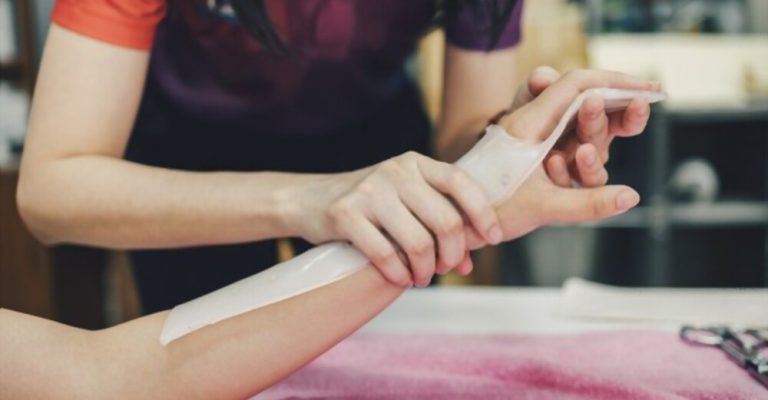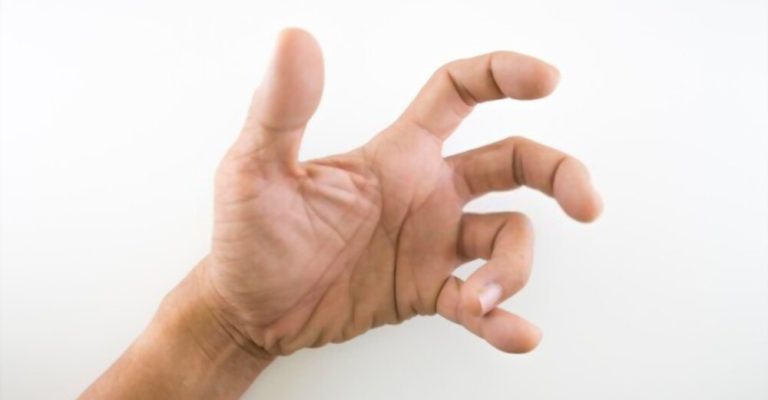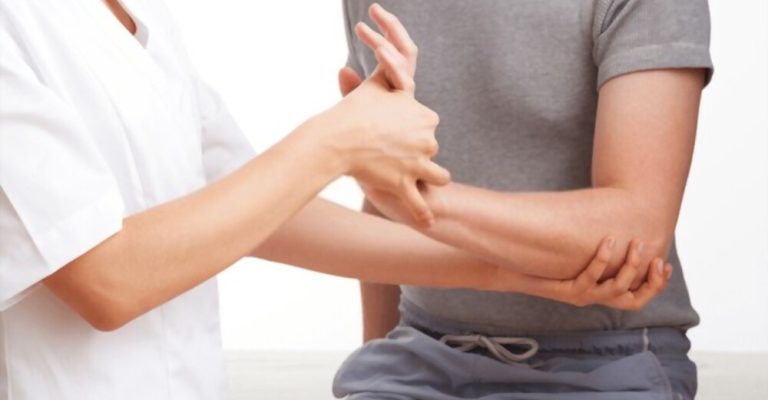
If you or a loved one is living with the impacts of stroke, an often-overlooked symptom can be clenched hands. Dealing with tight and curled fingers after a stroke can particularly impact people’s quality of life. Whether it prevents them from using and manipulating certain objects, makes daily chores difficult to complete, or simply keeps them from enjoying their favorite activities, dealing with tight and curled hands is never easy.
That’s why today we are discussing how to loosen clenched fingers after a stroke to help improve quality of life — the go-to therapies for relieving stiffened grip muscles and tips on addressing other practical concerns that arise due to hand clenching. With the right strategies in place, even those who once had difficulty opening their hands can learn how to do so over time.
Clenched fingers refer to the position where the fingers are tightly curled towards the palm, and the thumb is wrapped around them. This action, which can have various physiological, socio-cultural, and psychological implications, results from the contraction of specific muscles in the hand and forearm.
Physiologically, clenching one’s fingers into a fist involves the flexor and extensor muscles in the hand and the forearm. Specifically, the flexor digitorum superficialis, flexor digitorum profundus, and flexor pollicis longus are responsible for bending the fingers and the thumb inwards. At the same time, the muscles in the forearm control the strength and stability of the grip. The contraction of these muscles results in the formation of a clenched fist.
The nerve system and brain are constantly in touch with the body’s skeletal muscles, instructing them on when to contract and rest. Disruption of this hand-to-nervous system connection occurs when the motor cortex, among other regions of the brain, is injured during a stroke. Consequently, spasms will develop in the muscles of the hands.
As a result of stiffness and diminished deliberate, purposeful movement, the patient’s wrist, hand, and digits are unable to extend fully. Left unchecked, stiffness following a stroke can cause contractures, such as bent digits.
Consistently tight or contracted muscles, tendons, ligaments, or other structural tissues are a hallmark of the medical condition known as contracture. For example, curling the digits into the palm is a common symptom of contractures that limit hand and wrist mobility.
The development of contractures can be avoided if stiffness is treated early on. That way, you can keep your joints flexible and prevent the pain and suffering that come with contractures while still getting the most out of your body. If dystonia has advanced to contractures, there are still methods to ease the muscles in the hand and digits, but it will take time and stability.
First, we’ll go over some preventative measures you can take to lessen the likelihood that your hand stiffness and bent digits will deteriorate after a stroke.

The brain can disconnect or dissociate from a limb through a process known as “learned non-use,” which happens when a limb is not used regularly. Stroke survivors often experience learned non-use as their brains attempt to compensate for diminished function in favor of greater efficiency. However, the reduced use of the injured leg resulting from this taught adaptation can delay or impede the healing process.
This originates from the saying “use it or lose it,” often heard in neurorehabilitation settings. For example, it’s simpler to use only your stronger, undamaged side after a stroke to compensate for your diminished abilities. However, hand function will be lost, and the digits will keep on curving closer into the palm if you fail to use or exercise the fingers by at least extending them deliberately every day.

There are a variety of treatments for hand stiffness that can help stroke survivors uncurl their digits and unfist a clenched fist. Taking a step-by-step approach, where you begin with fundamental, easy tactics and advance to more challenging strategies or routines as you develop, is often the most effective strategy.
Intense hand clenching is a symptom of dystonia, so it’s essential to work with a therapist who can help you find effective strategies for releasing muscle tension. By giving you the best possible routines, braces, and other recovery methods, your vocational or physical therapist may prepare you for progress.
Following a stroke, your practitioner may suggest the following treatments for hand dystonia, which can help ease your digits and restore normal function:
Hand stiffness after stroke can be effectively treated with electrical therapy if your practitioner recommends it. Electrodes are positioned on the epidermis, and an electrical current is passed through them to stimulate the muscles underneath. Applying electronic stimulus to the wrists, for instance, can promote finger extension and distal phalanx exposure.
Your therapist will give you hand movements at home to maintain neuroplasticity between treatment appointments. Getting the most out of the healing process takes inspiration and responsibility. However, evidence shows low adherence to traditional domestic fitness regimens.
Devices that facilitate participatory hand treatment can be helpful in such cases. For example, sensors embedded in gloves like MusicGlove monitor hand motion in time with instrumental activities to promote agility. It’s authorized by the Food and Drug Administration (FDA) and has been shown in clinical trials to increase hand performance in as little as two weeks of use.
Even if survivors with clinched hands must use the gadget idly to complete the exercises, doing so still stimulates neurogenesis and encourages progress in stiffness and general hand mobility.
People with stroke who have developed tight hands and bent digits should make engaging in gentle stretching exercises a daily habit. A hand brace is useful because it allows the muscles and joints of the hand and fingers to be stretched for extended periods of time with minimal strain.
Prevention of contractures due to stiffness can be achieved by stretching the muscles and fibrous tissue of the hands. Gently extending in a pain-free range can help avoid stiffness from deteriorating if contractures have begun to develop, leaving digits to curve into the hand.
In addition, stimulating the brain and encouraging it to reorganize itself can be achieved by extending the afflicted hand and concentrating on the hand as you stretch. As you extend, focus your eyes on your hand to increase your brain’s consciousness of your hand and digits, which can help alleviate the tension contributing to the problem of taught non-use.
Active or inactive stretches and movements can be particularly beneficial, followed by applying a hand brace. Doing so can aid in the preservation of the gains achieved during physical training. You can either have your trainer suggest a decent hand brace for maintaining your hand extended or check out our suggested mittens for stroke patients.
Extreme stiffness and, in rare instances, muscular contractures can cause a person to hold their hand tightly closed after a stroke. Those who make it through will almost certainly require a combination of methods to help calm and expand the hand so that it can perform its functions again. The term “progressive combination therapy” is often used to describe a range of approaches to treatment that have been shown to improve stroke survivors’ chances of making a full recovery.
Consult your rehabilitation staff about available choices for healing bent fingers following a stroke. Although hand braces may help some people, others may need medical intervention, like Botox. In order to achieve the best possible outcomes, it is common practice to apply both therapies simultaneously.
In any case, you should make hand rehabilitation practice a central part of your recovery process. The neuroplasticity triggered by regular exercise gradually loosens the digits by rewiring the brain.
By blocking the production of substances in the body that trigger muscular spasms, the drug baclofen is helpful in the treatment of dystonia. Spasticity is alleviated as a result, as the overactivity of nerves and consequent reflexive muscular spasms are tempered.
Some patients with extreme stiffness benefit from intrathecal baclofen pumps rather than oral drug administration. Discuss this therapy choice with your healthcare provider if your rigidity impacts the fingers and your daily life. As the intrathecal baclofen pump is surgically implanted, it needs to be explored when all other treatment alternatives have been tried and failed.
Spasticity or clenched hand after stroke can cause the hand and digits to become permanently contracted and twisted if not treated. Moving helps remodel the brain and restores its capacity to interact with the hand, making it the most effective therapy for hand dystonia.
Most stroke patients can participate in the passive exercise, where their hand is gently guided, employing each movement; this is effective because it triggers neuroplasticity and is within their range of motion. However, if you’re experiencing hand discomfort, it’s important to consult with a physical or occupational therapist to determine the best course of action.